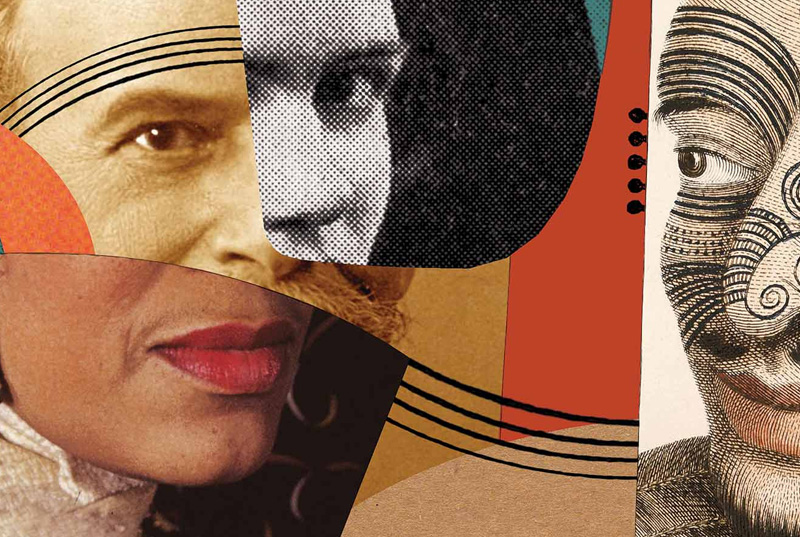Course Syllabus:
Paper – I
1.1 Meaning, scope and development of Anthropology.
1.2 Relationships with other disciplines: Social Sciences, Behavioural Sciences, Life Sciences, Medical Sciences, Earth Sciences and Humanities.
1.3 Main branches of Anthropology, their scope and relevance:
1. Social- cultural Anthropology.
2. Biological Anthropology.
3. Archaeological Anthropology.
4. Linguistic Anthropology.
1.4 Human Evolution and emergence of Man:
1. Biological and Cultural factors in human evolution.
2. Theories of Organic Evolution (Pre- Darwinian, Darwinian and Post-Darwinian).
3. Synthetic theory of evolution; Brief outline of terms and concepts of evolutionary biology (Doll’s rule, Cope’s rule, Gause’s rule, parallelism, convergence, adaptive radiation, and mosaic evolution).
1.5 Characteristics of Primates; Evolutionary Trend and Primate Taxonomy; Primate Adaptations; (Arboreal and Terrestrial) Primate Taxonomy; Primate Behaviour; Tertiary and Quaternary fossil primates; Living Major Primates; Comparative Anatomy of Man and Apes; Skeletal changes due to erect posture and its implications.
1.6 Phylogenetic status, characteristics and geographical distribution of the following:
1. Social Sciences, Behavioural Sciences, Life Sciences, Medical Sciences, Earth Sciences and Humanities.
2. Homo erectus: Africa (Paranthropus), Europe (Homo erectus heidelbergensis), Asia (Homo erectus javanicus, Homo erectus pekinensis).
3. Neanderthal Man- La-Chapelle-aux-saints (Classical type), Mt. Carmel (Progressive type).
4. Rhodesian man.
5. Homo sapiens — Cromagnon, Grimaldi and Chancelede.
1.7 The biological basis of life: The Cell, DNA structure and replication, Protein Synthesis, Gene, Mutation, Chromosomes, and Cell Division.
1.8
1. Principles of Prehistoric Archaeology. Chronology: Relative and Absolute Dating methods.
2. Cultural Evolution- Broad Outlines of Prehistoric cultures:
- Paleolithic
- Mesolithic
- Neolithic
- Chalcolithic
- Copper-Bronze Age
- Iron Age
2.1 The Nature of Culture: The concept and characteristics of culture and civilization; Ethnocentrism vis-à-vis cultural Relativism.
2.2 The Nature of Society: Concept of Society; Society and Culture; Social Institutions; Social groups; and Social stratification.
2.3 Marriage: Definition and universality; Laws of marriage (endogamy, exogamy, hypergamy, hypogamy, incest taboo); Types of marriage (monogamy, polygamy, polyandry, group marriage). Functions of marriage; Marriage regulations (preferential, prescriptive and proscriptive); Marriage payments (bride wealth and dowry).
2.4 Family: Definition and universality; Family, household and domestic groups; functions of family; Types of family (from the perspectives of structure, blood relation, marriage, residence and succession); Impact of urbanization, industrialization and feminist movements on family.
2.5 Kinship: Consanguinity and Affinity; Principles and types of descent (Unilineal, Double, Bilateral, Ambilineal); Forms of descent groups (lineage, clan, phratry, moiety and kindred); Kinship terminology (descriptive and classificatory); Descent, Filiation and Complimentary Filiation; Descent and Alliance.
3. Economic organization: Meaning, scope and relevance of economic anthropology; Formalist and Substantivist debate; Principles governing production, distribution and exchange (reciprocity, redistribution and market), in communities, subsisting on hunting and gathering, fishing, swiddening, pastoralism, horticulture, and agriculture; globalization and indigenous economic systems.
4. Political organization and Social Control: Band, tribe, chiefdom, kingdom and state; concepts of power, authority and legitimacy; social control, law and justice in simple societies.
5. Religion: Anthropological approaches to the study of religion (evolutionary, psychological and functional); monotheism and polytheism; sacred and profane; myths and rituals; forms of religion in tribal and peasant societies (animism, animatism, fetishism, naturism and totemism); religion, magic and science distinguished; magico- religious functionaries (priest, shaman, medicine man, sorcerer and witch).
6. Anthropological theories:
1. Classical evolutionism (Tylor, Morgan and Frazer)
2. Historical particularism (Boas); Diffusionism (British, German and American)
3. Functionalism (Malinowski); Structural- functionlism (Radcliffe-Brown)
4. Structuralism (L’evi – Strauss and E. Leach)
5. Culture and personality (Benedict, Mead, Linton, Kardiner and Cora – du Bois).
6. Neo – evolutionism (Childe, White, Steward, Sahlins and Service)
7. Cultural materialism (Harris)
8. Symbolic and interpretive theories (Turner, Schneider and Geertz)
9. Cognitive theories (Tyler, Conklin)
10. Post- modernism in anthropology
7. Culture, language and communication: Nature, origin and characteristics of language; verbal and non-verbal communication; social context of language use.
8. Research methods in anthropology:
1. Fieldwork tradition in anthropology
2. Distinction between technique, method and methodology
3. Tools of data collection: observation, interview, schedules, questionnaire, Case study, genealogy, life-history, oral history, secondary sources of information, participatory methods.
4. Analysis, interpretation and presentation of data.
9.1 Human Genetics – Methods and Application: Methods for study of genetic principles in man-family study (pedigree analysis, twin study, foster child, co-twin method, cytogenetic method, chromosomal and karyo-type analysis), biochemical methods, immunological methods, D.N.A. technology and recombinant technologies.
9.2 Mendelian genetics in man-family study, single factor, multifactor, lethal, sub-lethal and polygenic inheritance in man.
9.3 Concept of genetic polymorphism and selection, Mendelian population, Hardy-Weinberg law; causes and changes which bring down frequency – mutation, isolation, migration, selection, inbreeding and genetic drift. Consanguineous and non-consanguineous mating, genetic load, genetic effect of consanguineous and cousin marriages.
9.4 Chromosomes and chromosomal aberrations in man, methodology.
1. Numerical and structural aberrations (disorders).
2. Sex chromosomal aberrations – Klinefelter (XXY), Turner (XO), Super female (XXX), intersex and other syndromic disorders.
3. Autosomal aberrations – Down syndrome, Patau, Edward and Cri-du-chat syndromes.
4. Genetic imprints in human disease, genetic screening, genetic counseling, human DNA profiling, gene mapping and genome study.
9.5 Race and racism, biological basis of morphological variation of non-metric and metric characters. Racial criteria, racial traits in relation to heredity and environment; biological basis of racial classification, racial differentiation and race crossing in man.
9.6 Age, sex and population variation as genetic marker- ABO, Rh blood groups, HLA Hp, transferring, Gm, blood enzymes.
Physiological characteristics-Hb level, body fat, pulse rate, respiratory functions and sensory perceptions in different cultural and socio-economic groups.
9.7 Concepts and methods of Ecological Anthropology. Bio-cultural Adaptations – Genetic and Non- genetic factors. Man’s physiological responses to environmental stresses: hot desert, cold, high altitude climate.
9.8 Epidemiological Anthropology: Health and disease. Infectious and non-infectious diseases. Nutritional deficiency related diseases.
10. Concept of human growth and development: stages of growth – pre-natal, natal, infant, childhood, adolescence, maturity, senescence.
Factors affecting growth and development genetic, environmental, biochemical, nutritional, cultural and socio-economic.
Ageing and senescence. Theories and observations – biological and chronological longevity. Human physique and somatotypes. Methodologies for growth studies.
11.1 Relevance of menarche, menopause and other bioevents to fertility. Fertility patterns and differentials.
11.2 Demographic theories- biological, social and cultural.
11.3 Biological and socio-ecological factors influencing fecundity, fertility, natality and mortality.
12. Applications of Anthropology: Anthropology of sports, Nutritional anthropology, Anthropology in designing of defence and other equipments, Forensic Anthropology, Methods and principles of personal identification and reconstruction, Applied human genetics – Paternity diagnosis, genetic counseling and eugenics, DNA technology in diseases and medicine, serogenetics and cytogenetics in reproductive biology.


